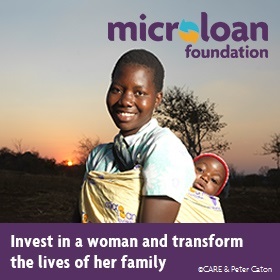Living fully after cancer: Insights, healing, and hope
Receiving a cancer diagnosis can feel like a dark cloud overshadowing every aspect of life. After treatment is over, many survivors find that they can rebuild and redefine their lives in remarkable ways.
This journey reveals a new perspective on what it means to live fully. Every survivor’s experience is personal, yet they share a collective resilience that can inspire themselves and countless others facing similar battles.
Understand the emotional aftermath
The emotional toll lingers long after the physical symptoms have faded. Survivors may experience anxiety about the cancer returning, difficulty readjusting to normal life, or simply processing the existential changes that the experience has brought. Recognize that it’s perfectly normal to experience these feelings.
Friends and family can provide encouragement and love; professionals can guide survivors through the complexities of their feelings. Many survivors benefit from sharing experiences in support groups or online forums, which encourage an environment of understanding and empathy. Finding a space where survivors can express their fears and triumphs can help in processing these emotions.
Establish connections in recovery with apps
There are various apps designed to connect individuals sharing similar experiences, where users can exchange stories and practical advice. The virtual world may help those who struggle to establish connections in person or may feel isolated. Apps simplify the sharing of resources, tips, and uplifting messages.
When app users seek support from other cancer survivors, they find that the stories resonate deeply and promote healing through shared experiences. These apps provide curated content that brings attention to effective coping strategies, wellness tips, and opportunities for events. Technology can create a sense of belonging and connection for many navigating their post-cancer lives.
Rediscover joy through new hobbies
Embracing new hobbies can be an excellent pathway to rediscovering joy after a cancer journey. Engage in activities that stimulate creativity or physical wellness to reclaim happiness. Painting, gardening, or taking up a new sport enriches lives and contributes positively to mental well-being.
Many survivors find fulfillment in exploring new forms of physical activity. Yoga, hiking, dance, or any sort of physical movement can boost mood and promote healing. These activities do not have to be strenuous; gentle exercises can do the job. Discovering movement that feels good can invigorate the body and mind.
Connecting with communities centered around these hobbies can support the healing journey even more. Creativity blossoms in shared spaces and creates connections that may lead to lifelong friendships. Participating in community pottery classes or joining local walking groups can interject socialization into the healing process.
Prioritizing physical health post-treatment
A consistent routine that incorporates balanced nutrition and exercise can rejuvenate the body and reinforce a survivor’s commitment to their well-being. Nutrition strengthens the immune system and supports health. Focus on a whole foods diet rich in fruits, vegetables, whole grains, and lean proteins that provide nutrients the body craves.
Exercising regularly maintains physical strength and promotes emotional resilience. Walking, cycling, or participating in community fitness classes can be highly rewarding. Setting achievable fitness goals creates a sense of accomplishment that can elevate self-esteem and motivation. Incorporate regular health check-ups and screenings into a survivor’s routine. Knowledge and awareness of one’s body are powerful tools that enable survivors to take charge of their health long after the treatment has ended.
Mindfulness and spirituality in healing
Mindfulness practices can improve emotional and spiritual healing. By centering on the present moment, individuals can cultivate peace and tranquility and mitigate anxiety stemming from post-cancer fears. Many survivors have reported transformative experiences when integrating mindfulness techniques into their daily lives.
Spirituality may take on new meaning during this time. For some, reconnecting with faith or exploring new spiritual paths can offer profound comfort and encouragement. It provides a framework for understanding the challenges faced. Natural walks, journaling, or participating in support circles can reinforce this process. Blending mindfulness and spirituality encourages a holistic approach to healing and helps individuals align their mind, body, and spirit on the journey ahead. Rituals, both old and new, can offer a grounding experience as survivors learn how to navigate life beyond cancer.
The power of storytelling
Many survivors find catharsis in communicating their journeys through writing, blogging, or public speaking. People can process emotions and create meaning from their experiences. Storytelling can have ripple effects that promote awareness and understanding of cancer’s realities.
Personal stories shared through various platforms can demystify the illness and cultivate camaraderie among those affected. Survivors empower others, provide insights, and encourage hope. These narratives can inspire, console, educate audiences, and forge bonds that unite rather than divide.
Rebuilding a life after cancer is about thriving with joy, purpose, and hope. Embracing the journey involves healing emotionally and physically and building connections with yourself and others. Survivors can create their own paths to fulfillment with this new understanding, celebrating the richness of life every step of the way.




